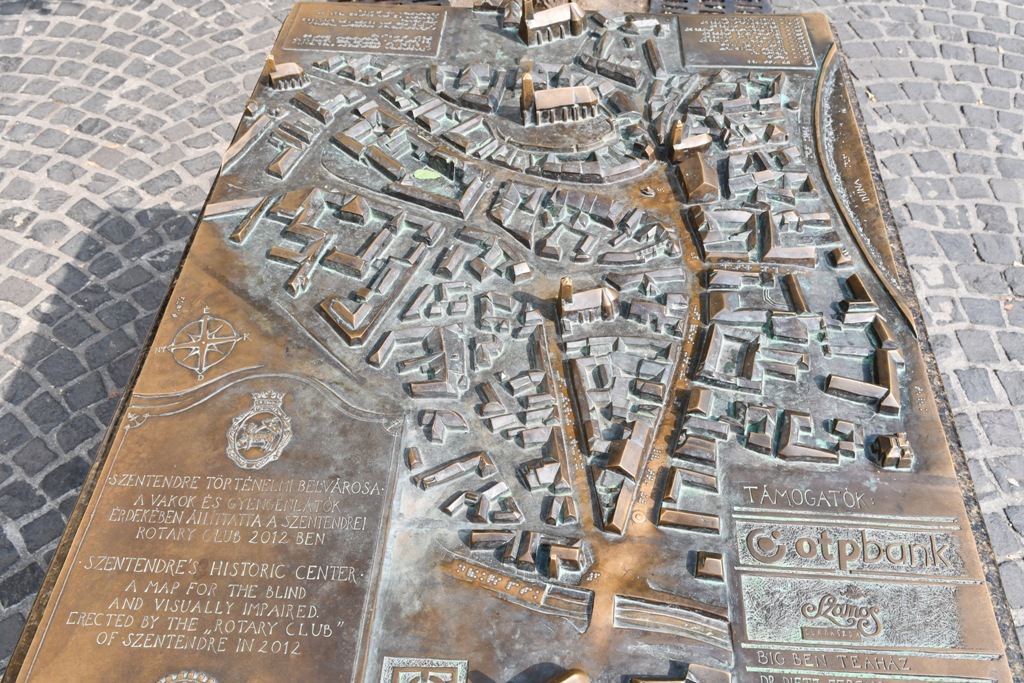
During our walk, we were able to listen to a military band play some traditional music. When I asked the tour guide if there was something special, she said that they do this on a regular basis but she wasn't sure if they would be here when we were in the area.
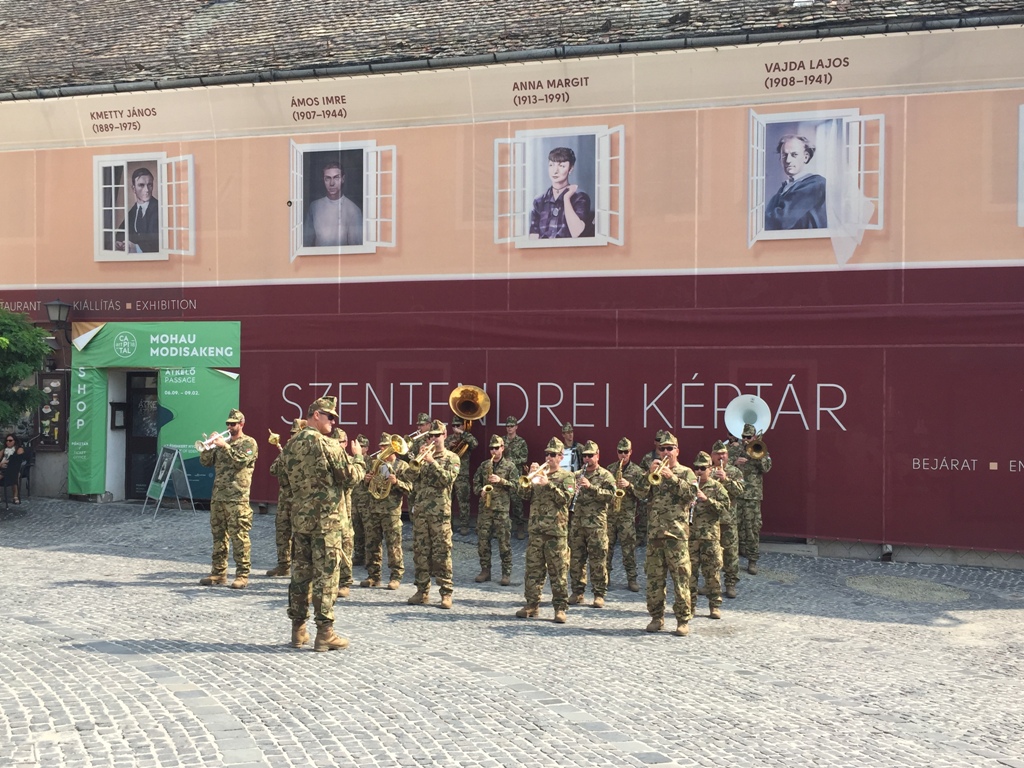
Guess which way is the wine shop? This is embedded in the brick of the stone.
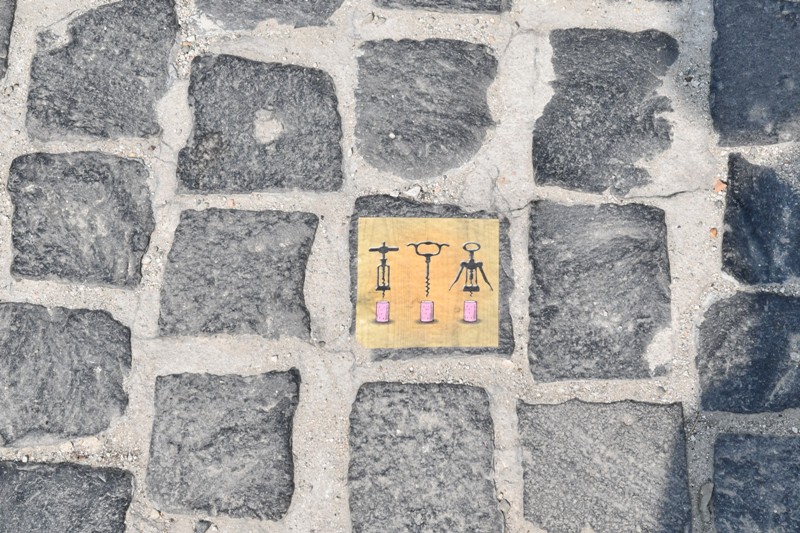
If ever you are not sure which city you are in, look down and search for a manhole cover. It seems they are all specially made with the name of the city on it. I guess there is a lot of stealing going on between cities....lol I like it, as it tells me exactly where I am...Szentendre!
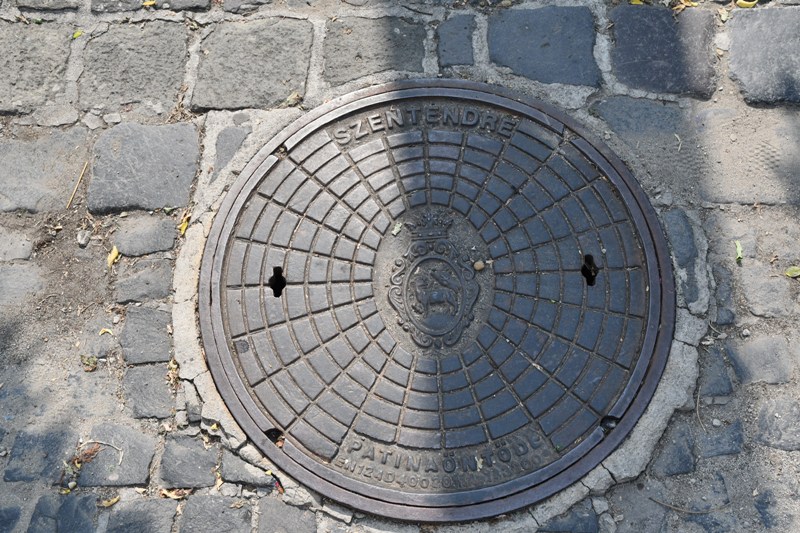
Szentendre is just outside of Budapest. Churches, museums, galleries and cafés in Baroque settings symbolize this lovely town. Serbians fleeing from the Turkish occupation settled here in the 17th century in large numbers, giving the city its Mediterranean character, which was preserved to this day. The architecture, cobblestone streets and the city's picturesque location have attracted many artists throughout the years. This is Sharon buying a table cloth for our kitchen table. All hand made.

Here is an interesting picture I took on one of the windows of the buildings in Szentendre. It was not until the dissolution of the Soviet Union in 1991 that the tricolor was brought back as the official flag of the new Russian Federation. In December of 1991, as the world watched in amazement, the Soviet Uniondisintegrated into fifteen separate countries. Its collapse was hailed by the west as a victory for freedom, a triumph of democracy over totalitarianism, and evidence of the superiority of capitalism over socialism.
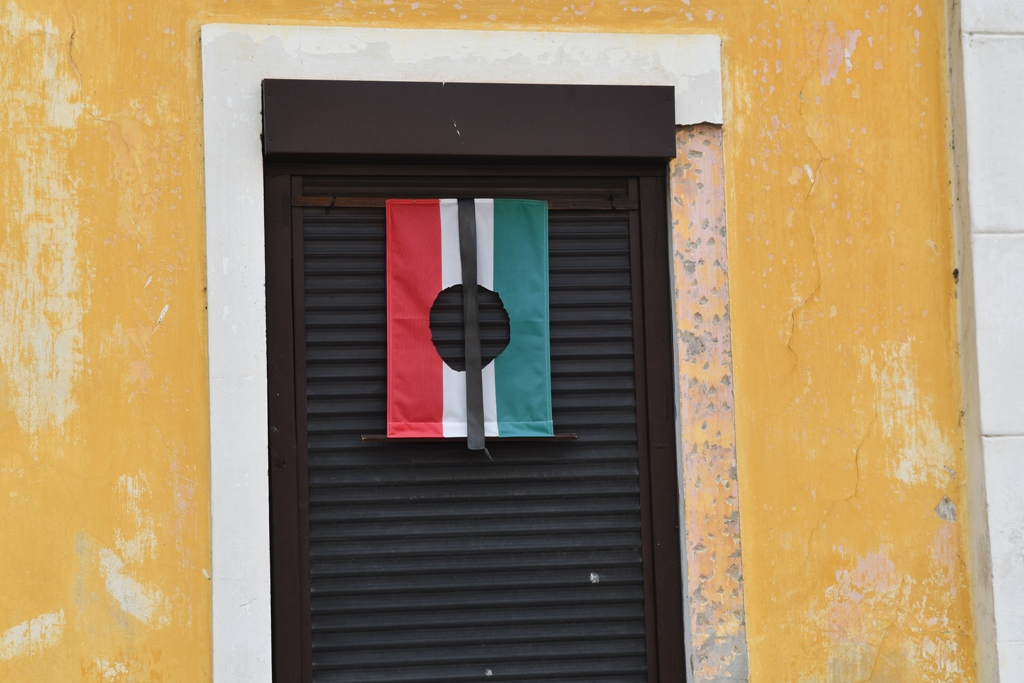
Interesting Market street
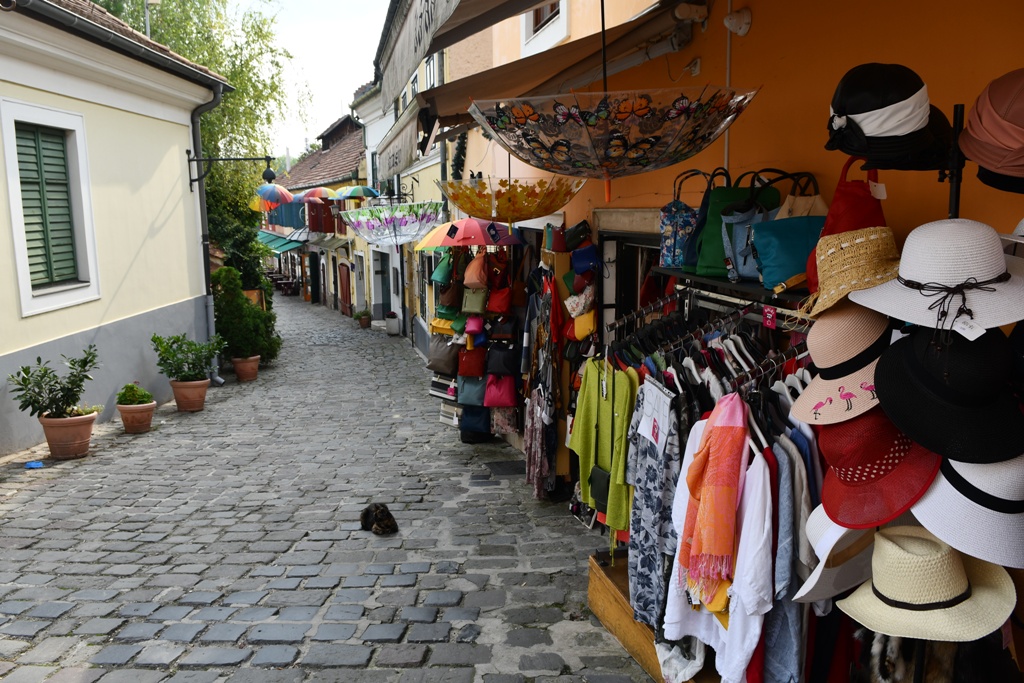
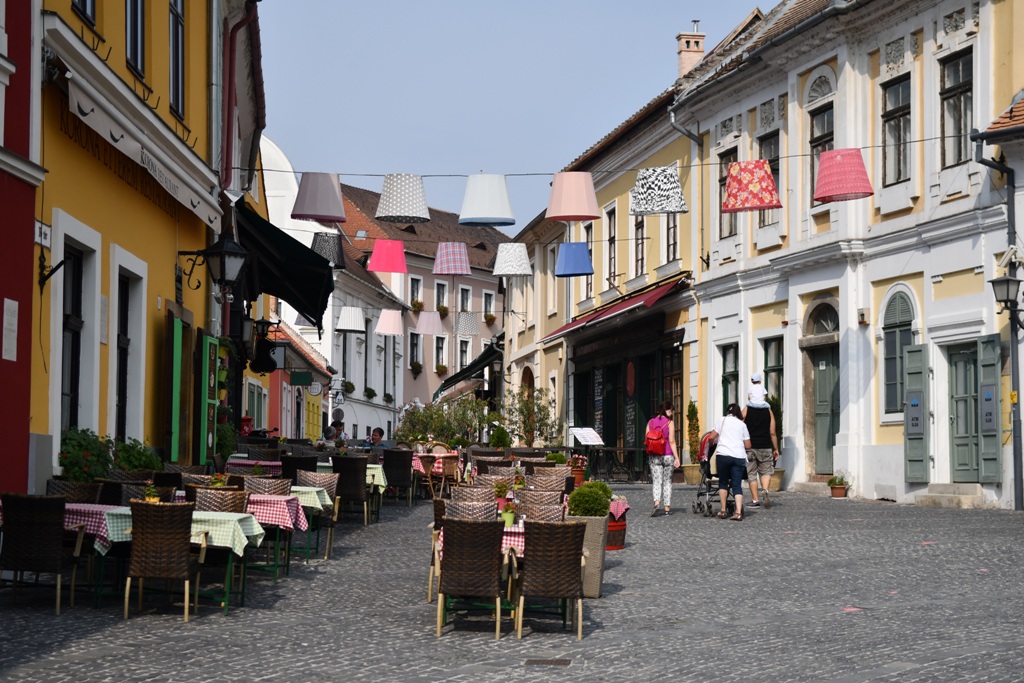
An interesting Tree.
/TAS_3990.jpg)
Next, we visited Margit Kovács Museum she was a Hungarian ceramist and sculptor. She won international awards in Milan, Paris, Berlin, Brussels and Rome. She was very popular in Hungary and received many public commissions. The Communist regime gave her the Distinguished Artist Award in 1959. Her main themes are country folk, family life and bible stories. In 1972 she donated the majority of her work to the Pest County Museums Directorate in Szentendre. A museum of her work was opened in 1973 in Vastagh Street, Szentendre.
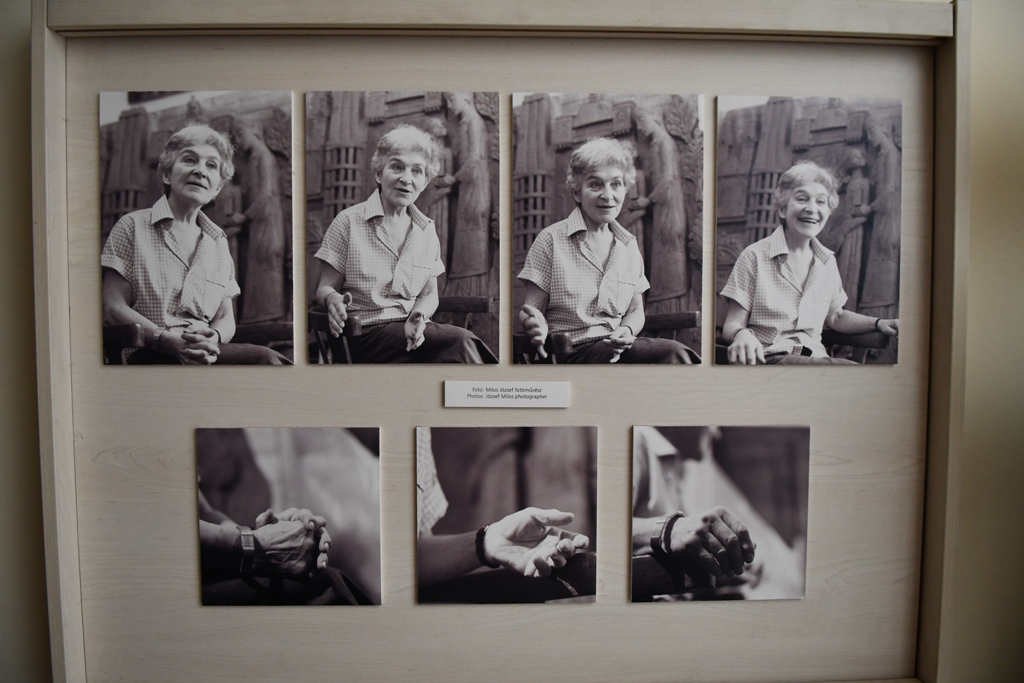
Interesting entrance
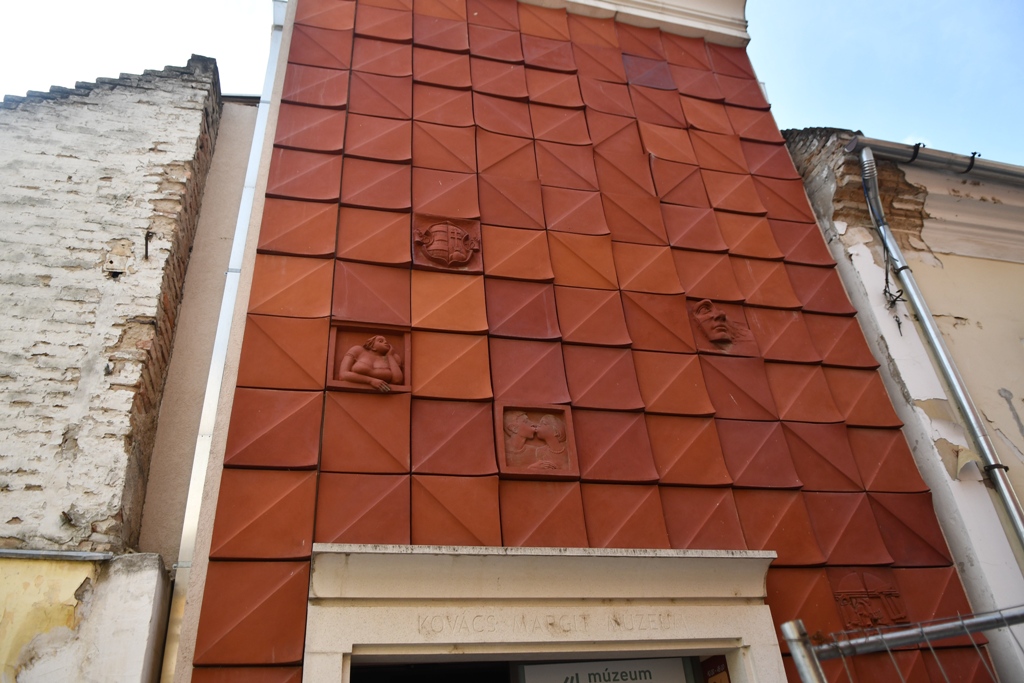
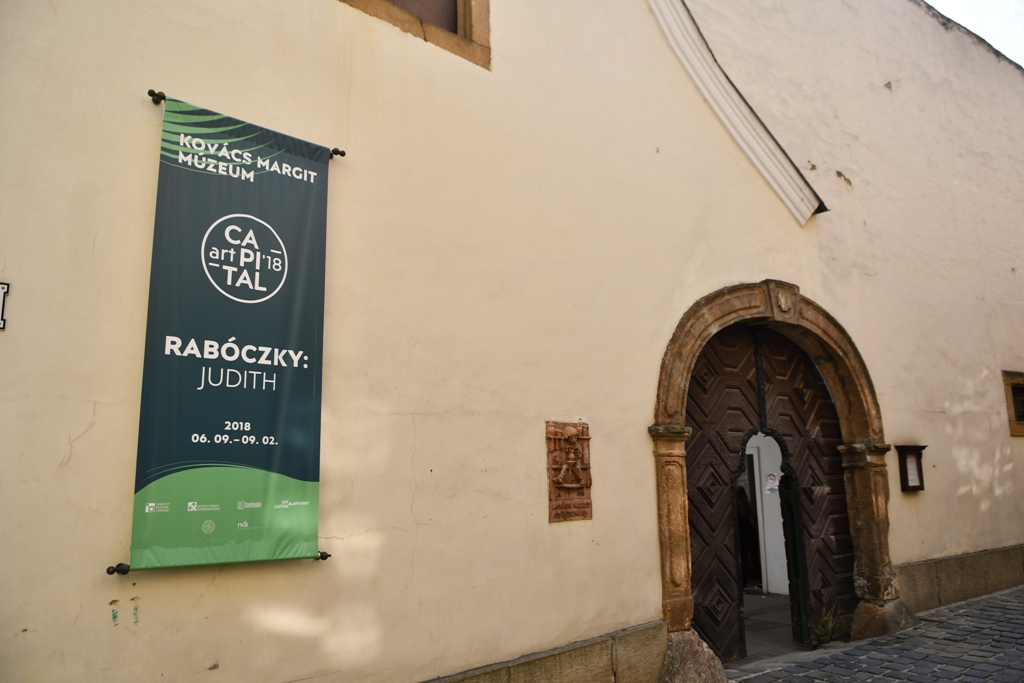

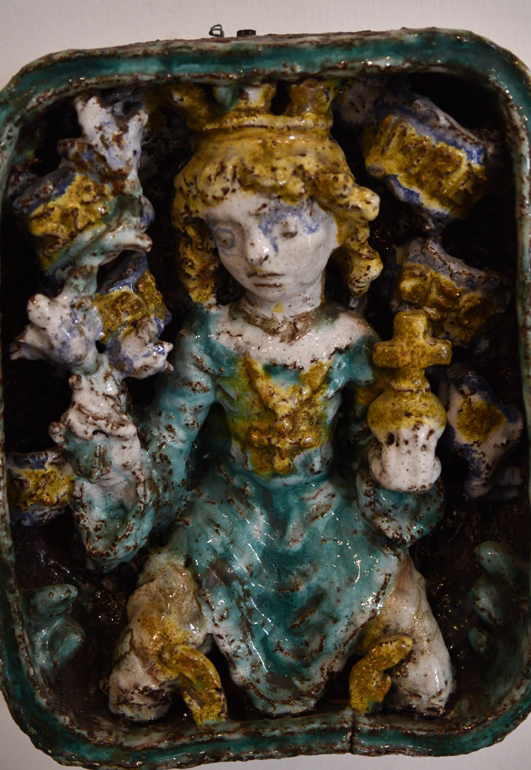
This one was Parasztlakodalom (1955) called Peasant Wedding.

Some of her furniture...loved the detail in the wood.
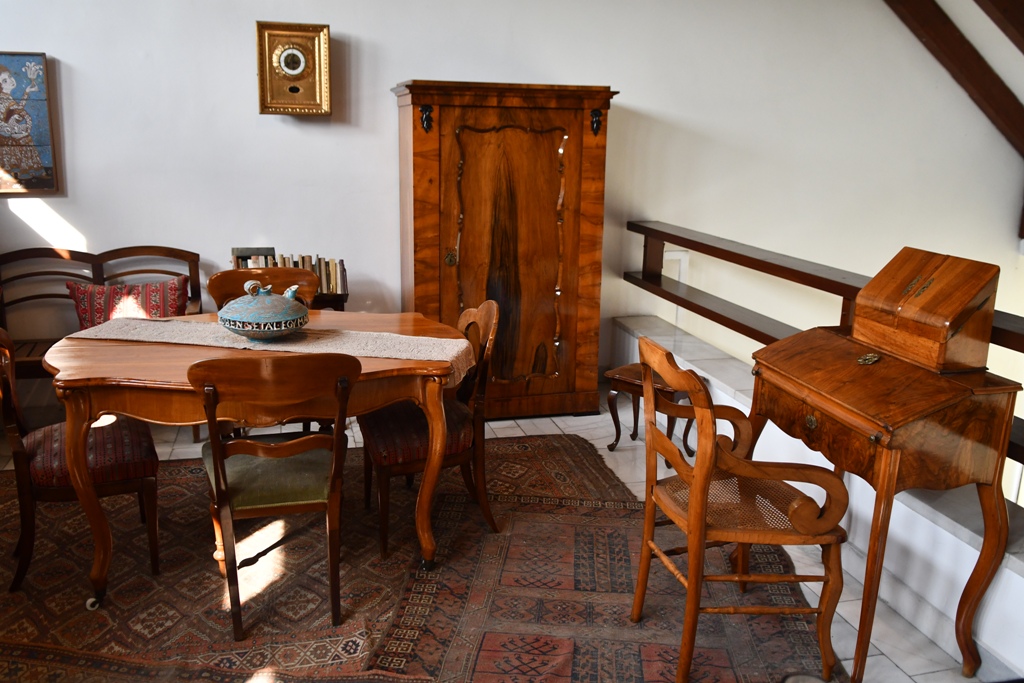
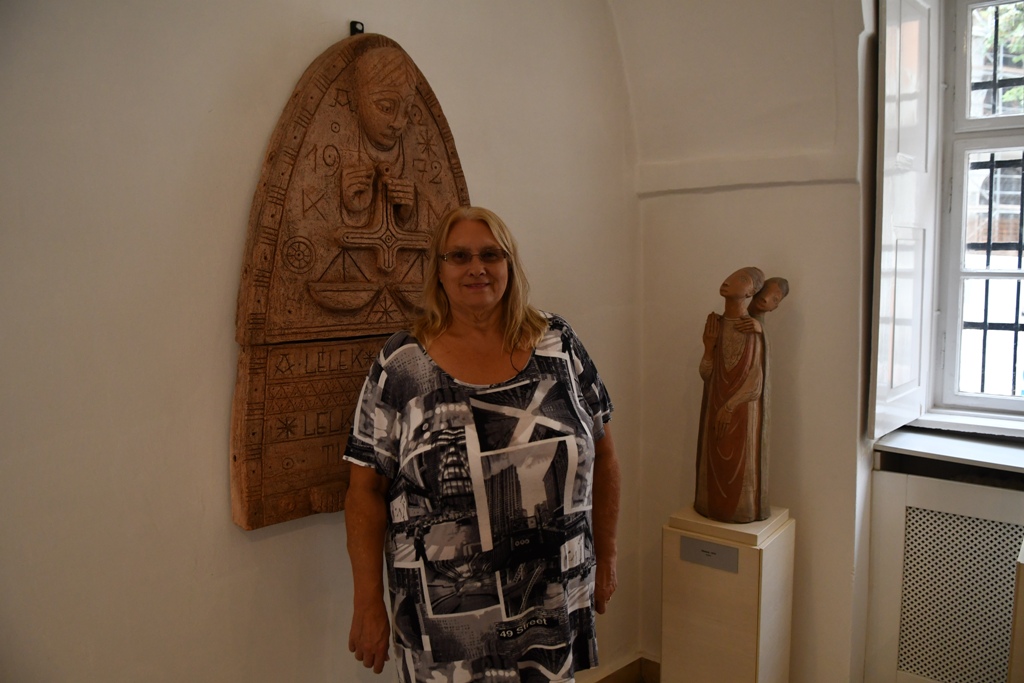
This is the Late Creative Period
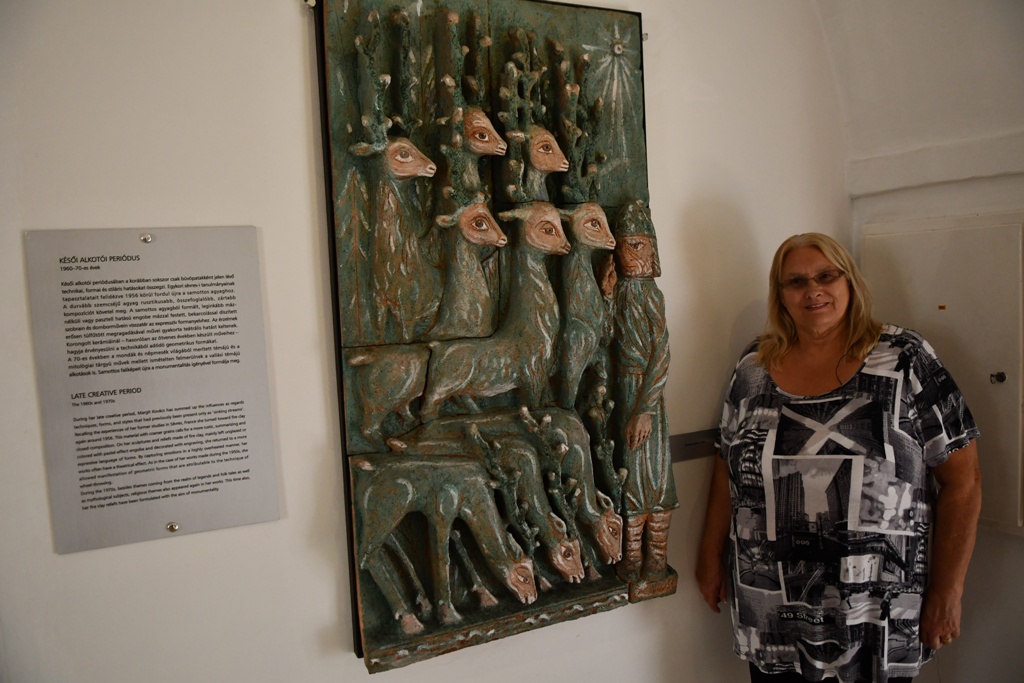
As you can see, she was very talented. This was a wedding gift.
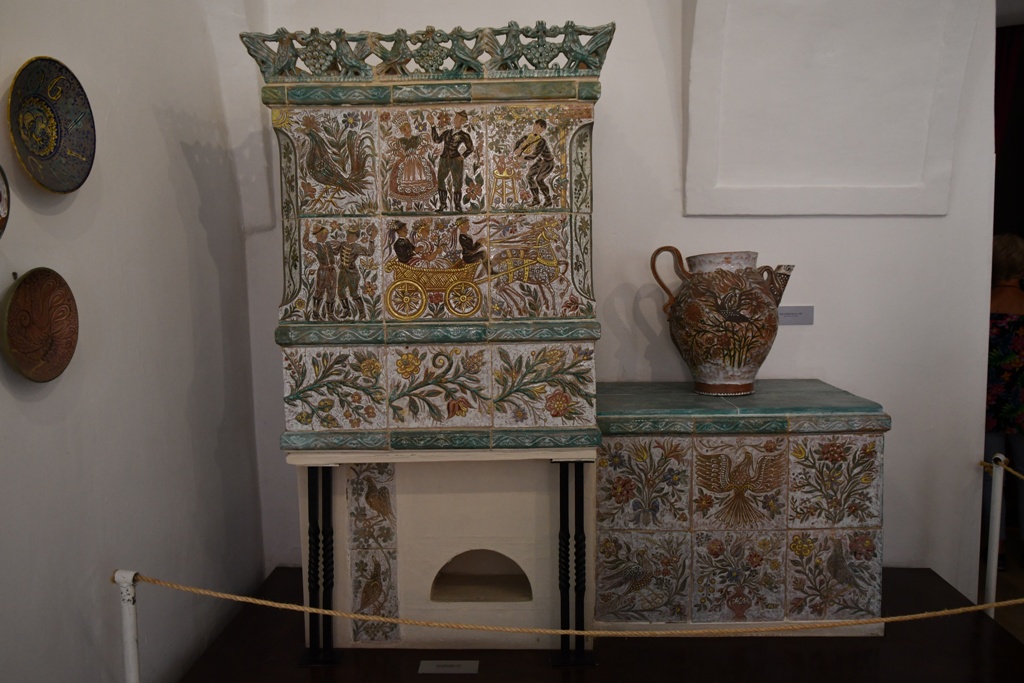
After all that it was time to have some soft drink and cake...they assured me that everything they serve is "low in calories". Here we are having a bite with Pam. Pam's sister is in the table behind us.


After that snack I went for a little walk and saw this as I was walking over a bridge. Notice how low the water level is at this time and also how nicely decorated is the wall.

Next, there were stairs that Sharon and I climbed to get to the top...
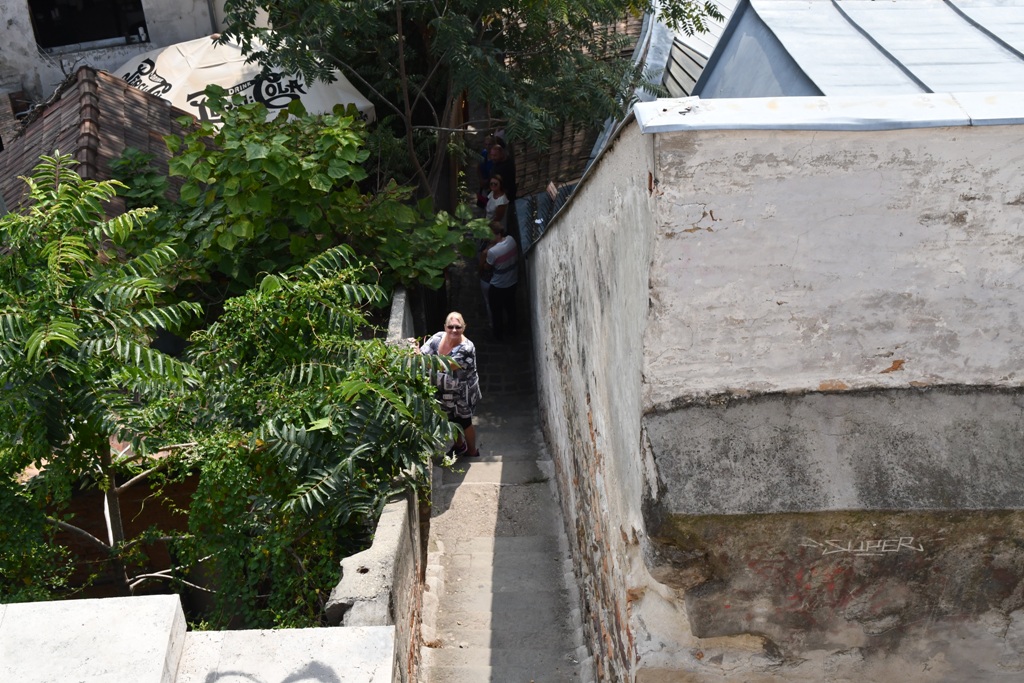
The name of the church...established in 1958...at least that is what the plaque says.
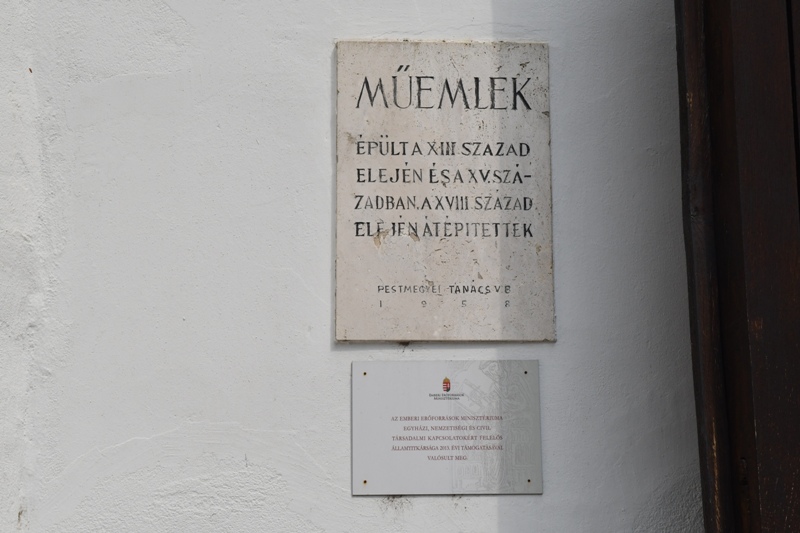
For the history of the church click here
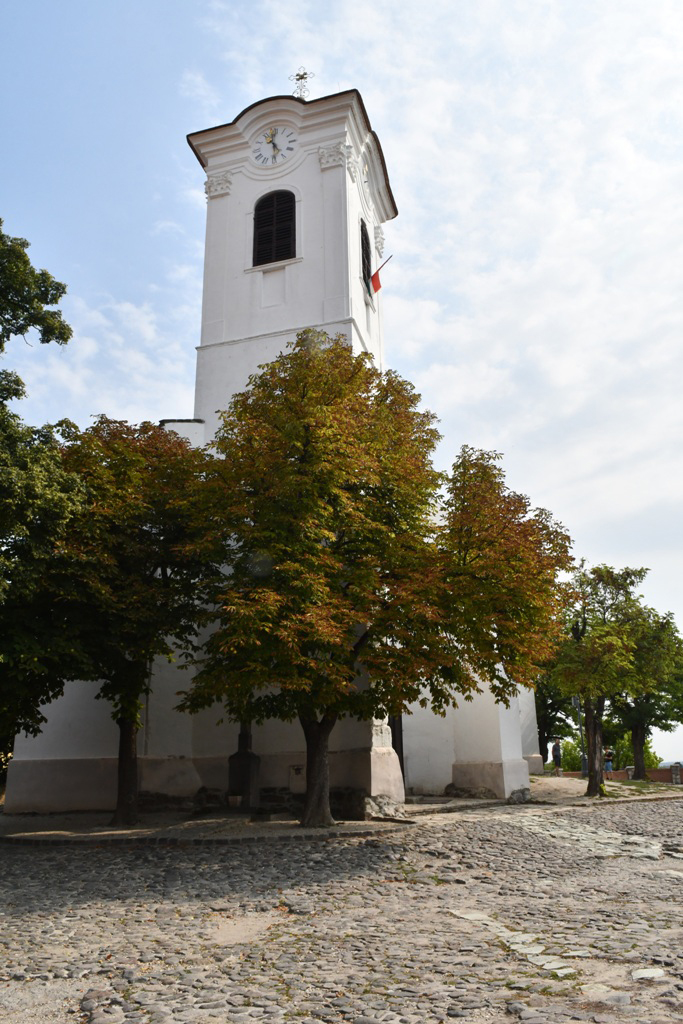
On our way back in a Viking bus. What a cruise line that has all the angles covered
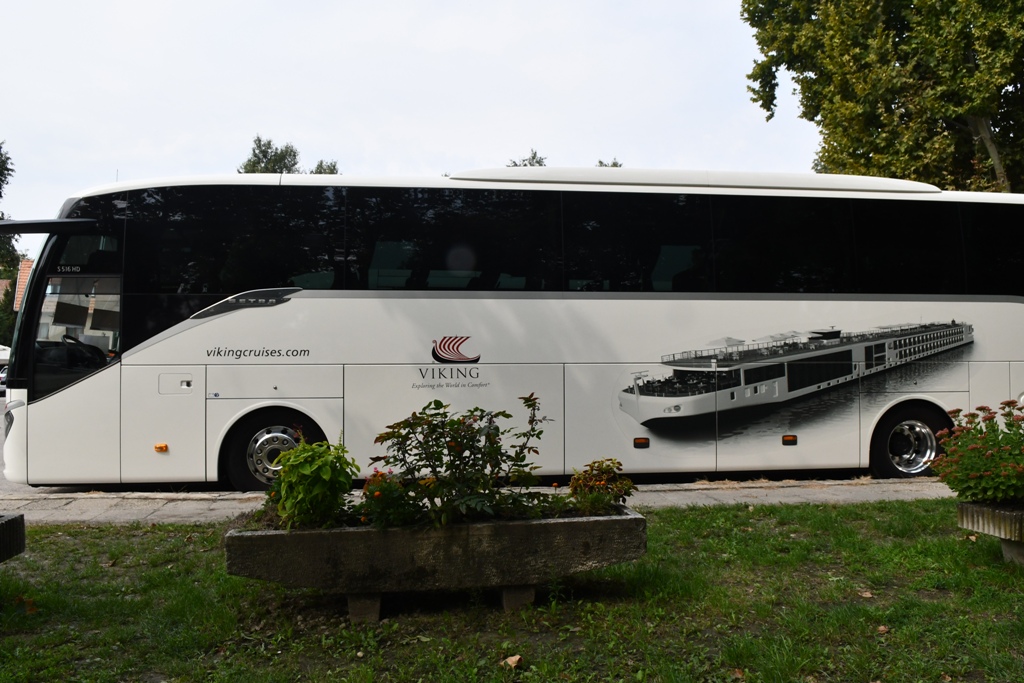
Sharon headed back to the hotel and I headed for a walk in the Market square
To the memory of the victims
Sculptors Gyula Pauer and Can Togay have created a moving memorial to these Holocaust atrocities that sits in front of the magnificent Parliament building on the edge of the river. What visitors will see are 60 pairs of rusted period shoes cast out of iron. Different sizes and styles reflect how nobody was spared from the brutality of the Arrow Cross militia (the shoes depict children, women, businessmen, sportsmen etc.). Behind the sculpture lies a 40 meter long, 70 cm high stone bench where at three points are cast iron signs, with the following text in Hungarian, English, and Hebrew: "To the memory of the victims shot into the Danube by Arrow Cross militiamen in 1944–45. Erected 16 April 2005."
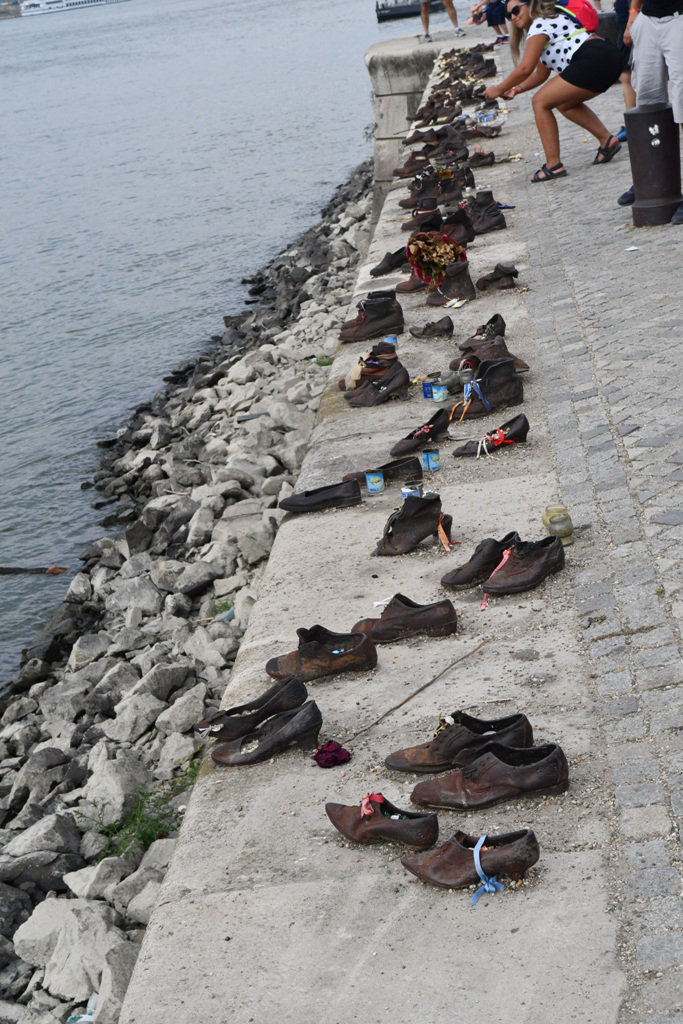
Approximately 20,000 Jews were brutally shot along the banks of the Danube River. The victims were forced to remove their shoes at gunpoint (shoes being a valuable commodity during World War II) and face their executioner before they were shot without mercy, falling over the edge to be washed away by the freezing waters.
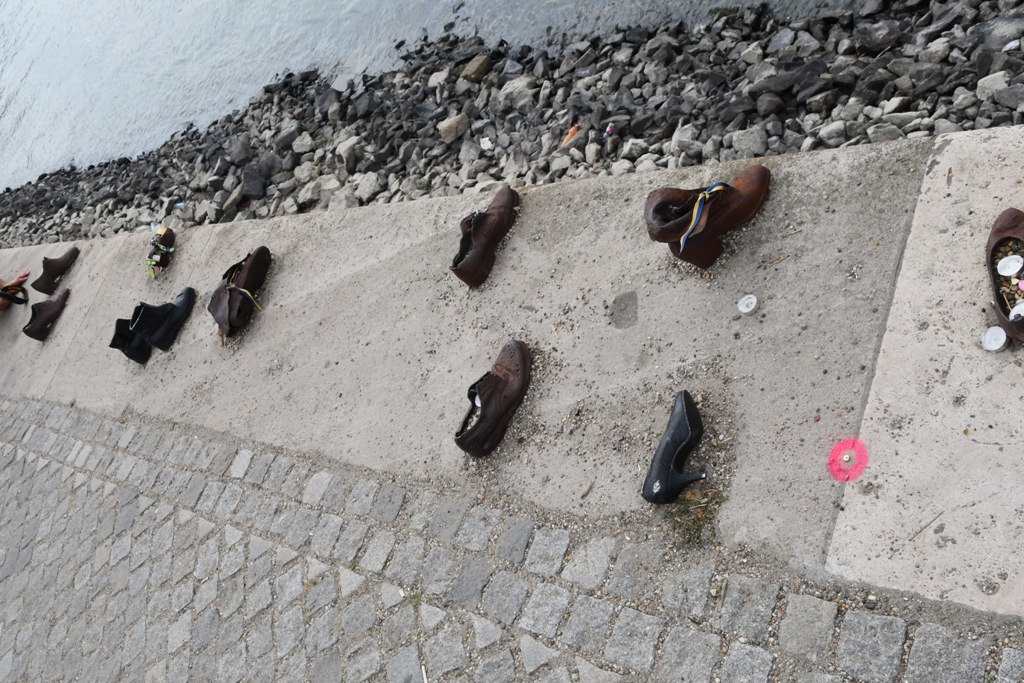
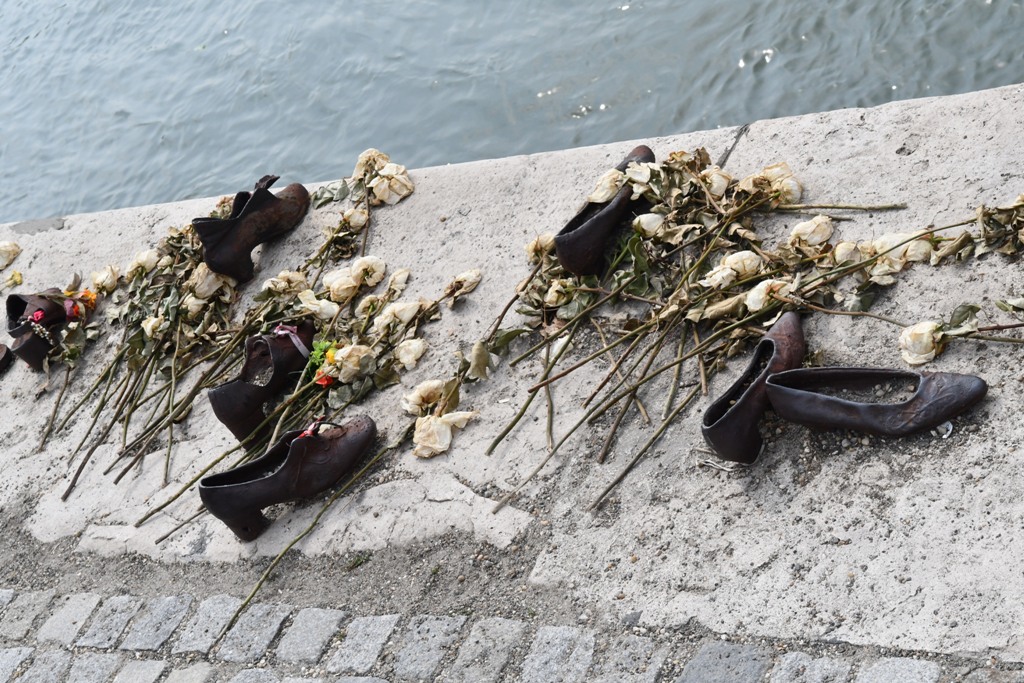
On the same side and to the back of the shoe memorial, is the The Hungarian Parliament Building . The Parliament building, a magnificent example of Neo-Gothic architecture (although displaying Renaissance and Baroque characters too), is just over 100 years old. During the Communist era a large red star was added to the central tower above the dome of the building, but after its downfall, the star was removed.
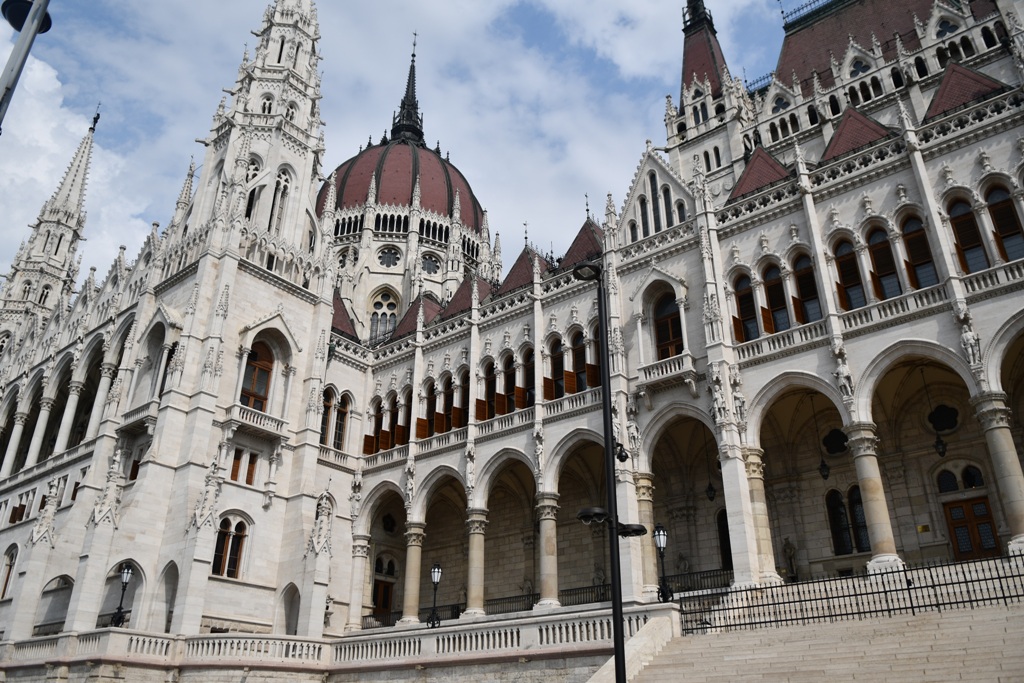
The Budapest Parliament building is the third largest Parliament building in the world.
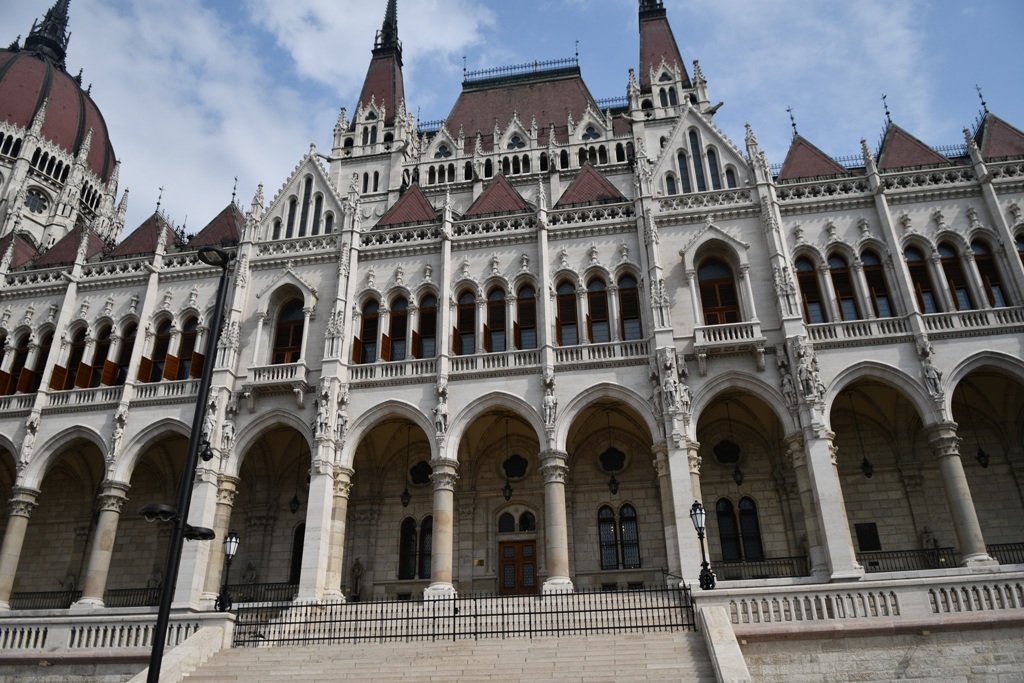
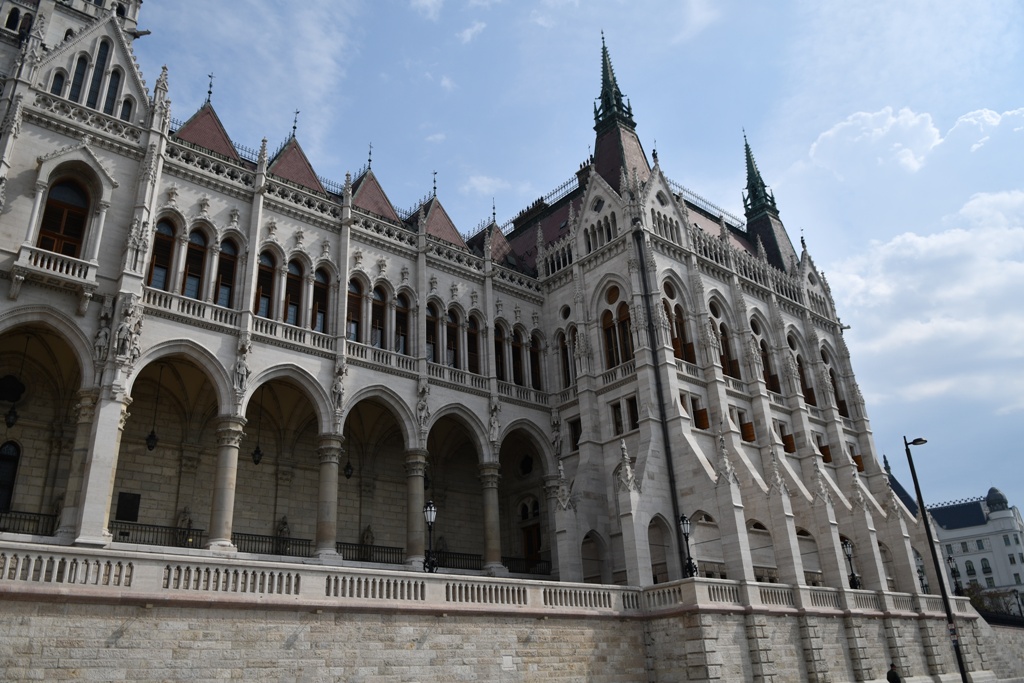
The square where the Hungarian Parliament stands was named after Lajos Kossuth, a Hungarian lawyer, journalist, politician and Governor-President of Hungary in 1849. He was widely honored during his lifetime, including in the United States, as a freedom fighter and a bellwether of democracy in Europe. His memorial, as well as a memorial for the 1956 Hungarian Revolution can be seen in front of the Parliament building. Parliament Square (Kossuth Lajos Square)
Statue of Count Gyula Andrássy inaugurated in front of Hungarian Parliament. The 6.5-meter high bronze equestrian statue, the work of renowned Hungarian sculptor György Zala, was originally installed in 1906 but was demolished by the Communist authorities after 1945. Count Gyula Andrássy (1823 – 1890) was a Hungarian statesman, who served as Prime Minister of Hungary (1867–1871) and subsequently as Foreign Minister of Austria-Hungary (1871–1879). Andrássy was a conservative; his foreign policies looked to expanding the Empire into Southeast Europe, preferably with British and German support, and without alienating Turkey. He saw Russia as the main adversary, because of its own expansionist policies toward Slavic and Orthodox areas. He distrusted Slavic nationalist movements as a threat to his multi-ethnic empire.
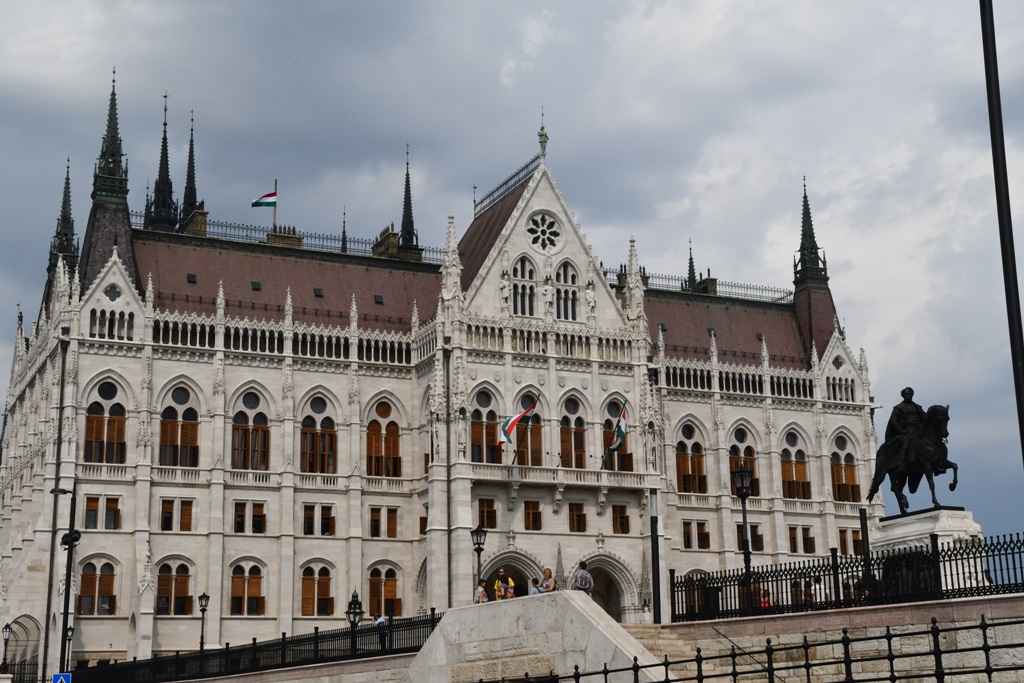
/Gyula.jpg)
A view ffrom straight on...
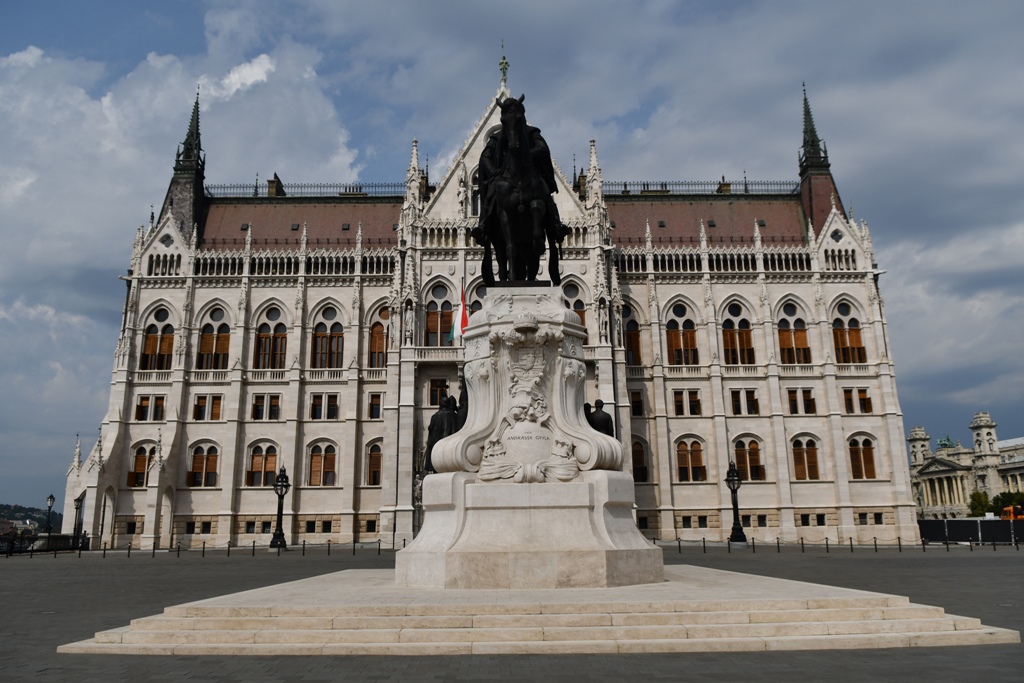
Well, time to walk back over the bridge and to the hotel. The hotel Hilton is located to the right of the tallest church steeple.
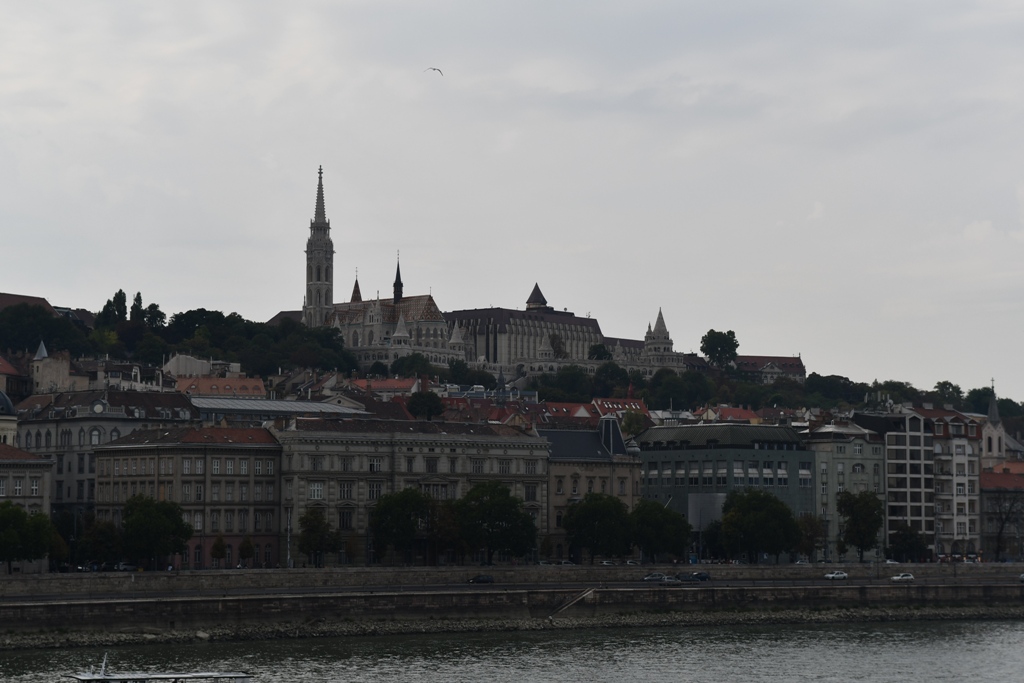
Connecting the banks of River Danube and the Buda Castle, the Funicular (Budavari Siklo in Hungarian) has been in service since 1870. The Buda Castle Funicular was admitted to the list of UNESCO World Heritage sites in 1987.
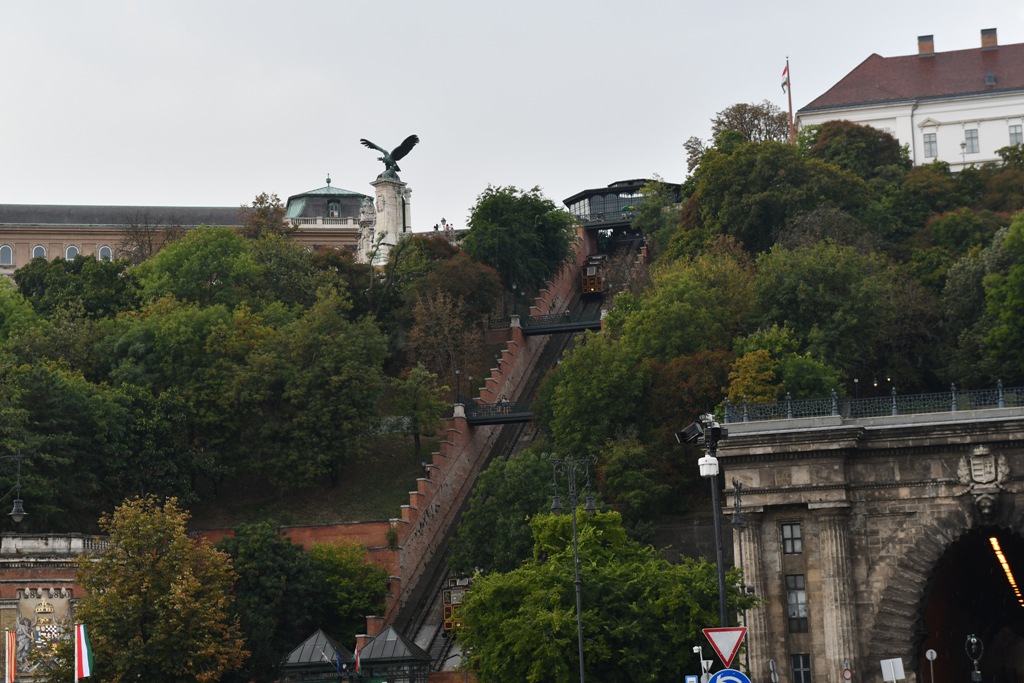
I made it up the hill, but I did not use the funicular...I used the stairs. I was able to capture a picture of the parliament building.

Getting closer to the hotel....
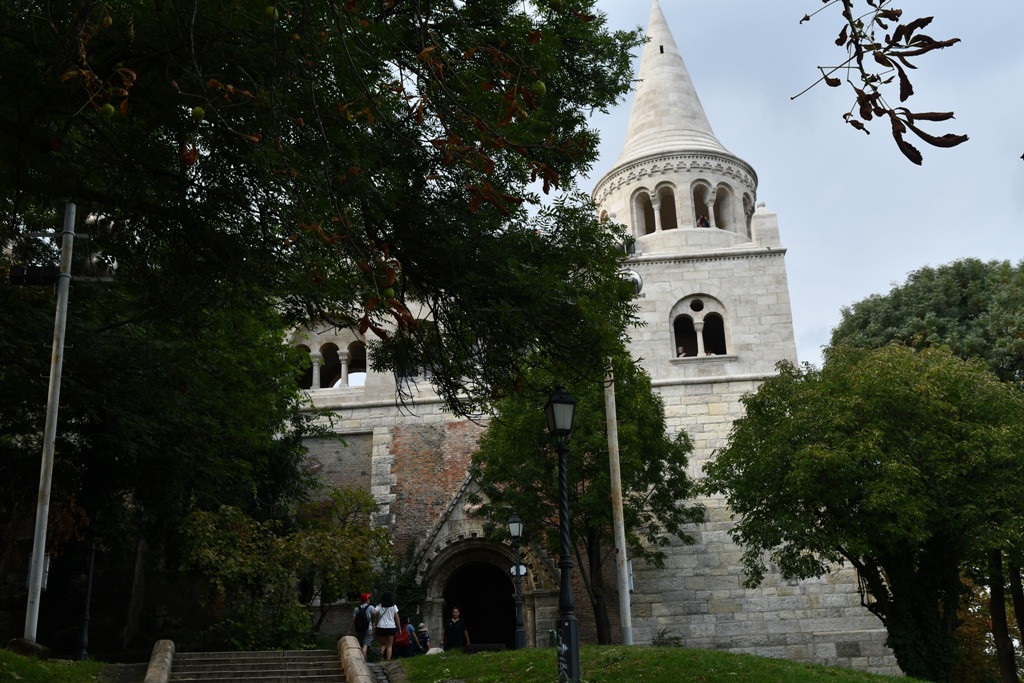
They were having a book fair near the hotel. I understand that this is a traditional back-to-school event.
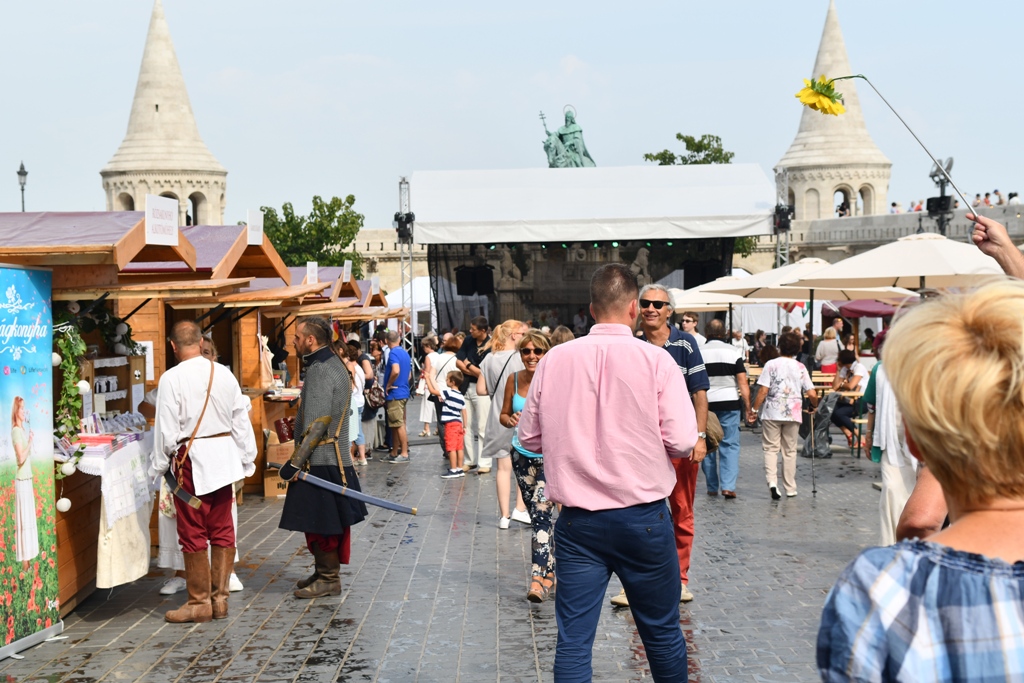
And to top it off, there was a wedding
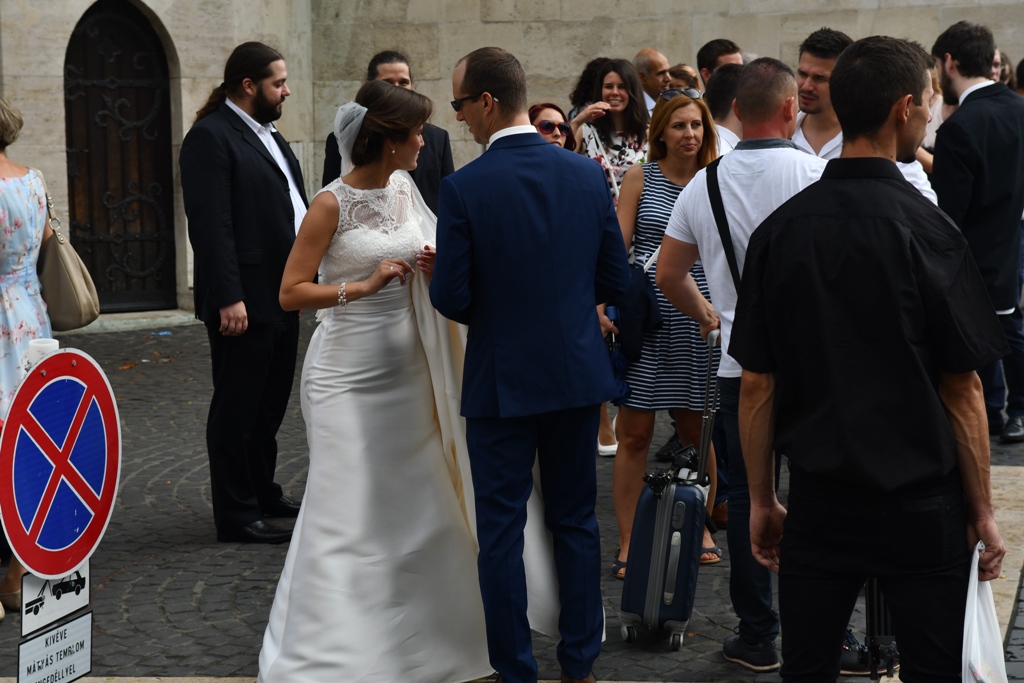
An excellent place for some wedding pictures
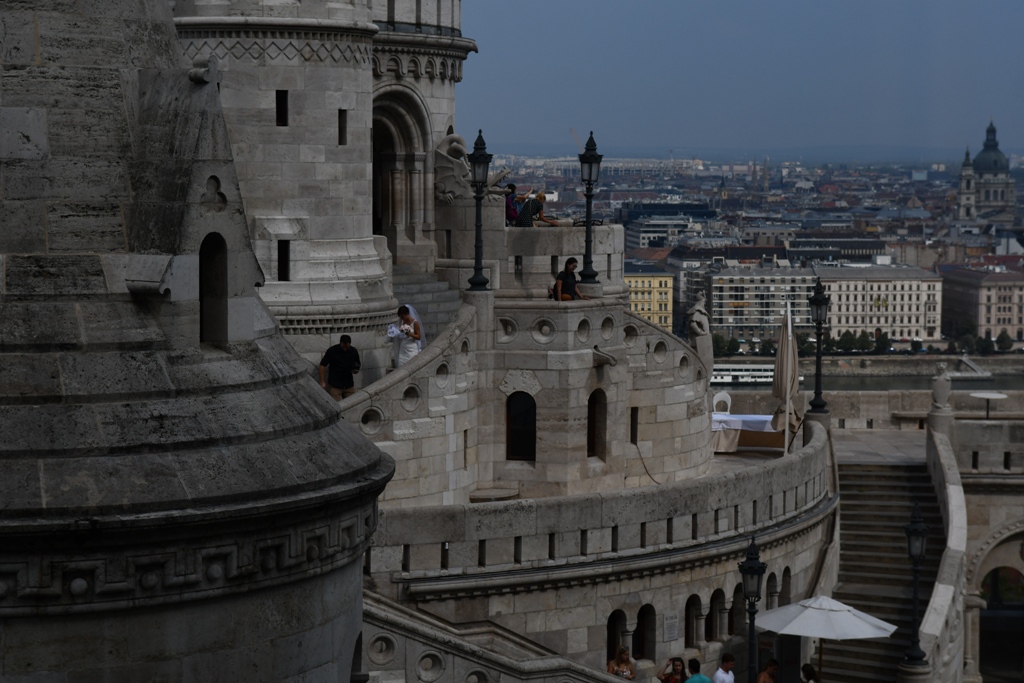
Next we went out for supper

Sharon had Pork Stew, egg barley risotto with vegetables
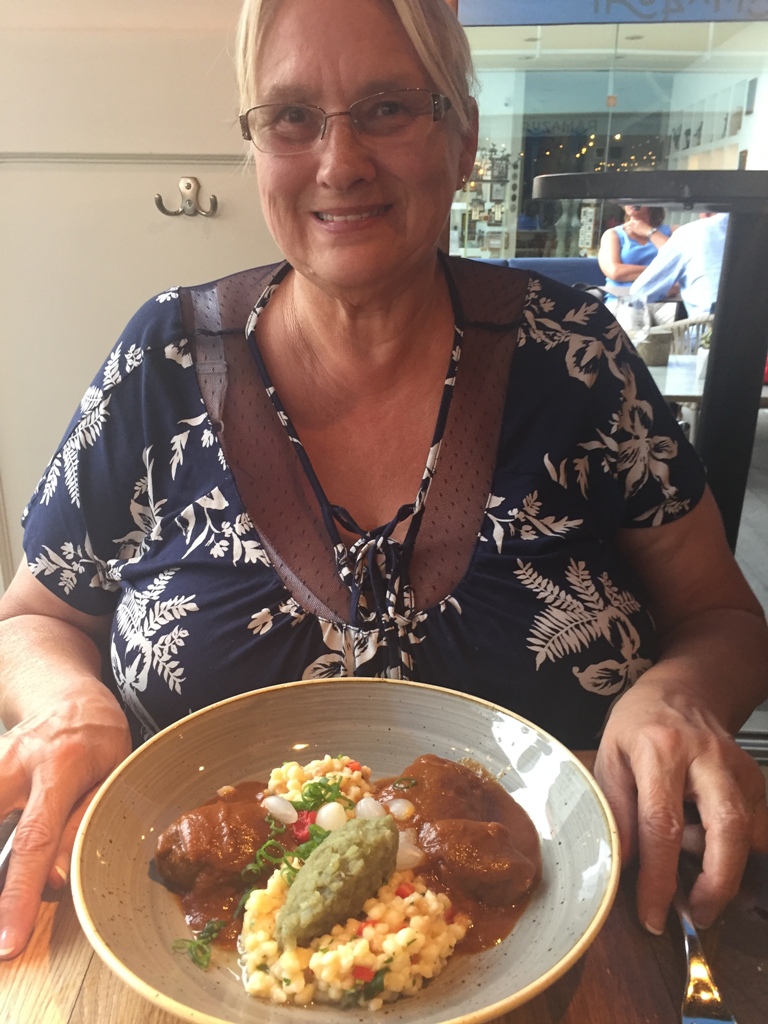
I had Duck Leg, blueberry cabbage wwith crunchy potatoe
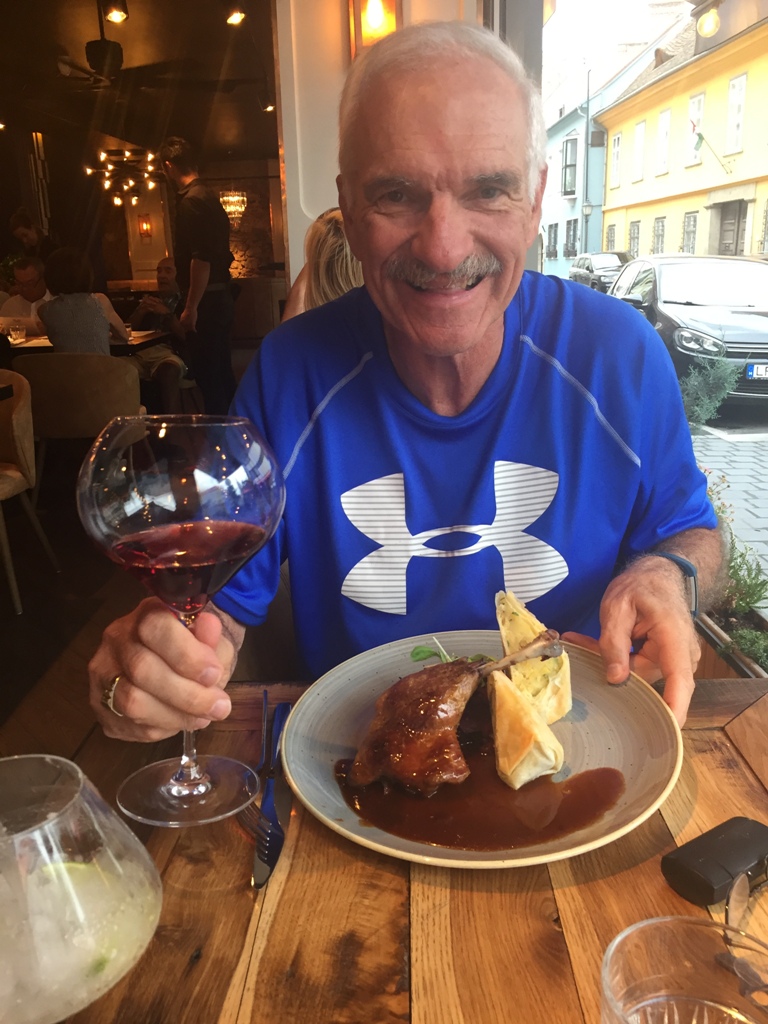
Back to Passage to Eastern Europe click here
/TAS_3990.jpg)






/Gyula.jpg)
